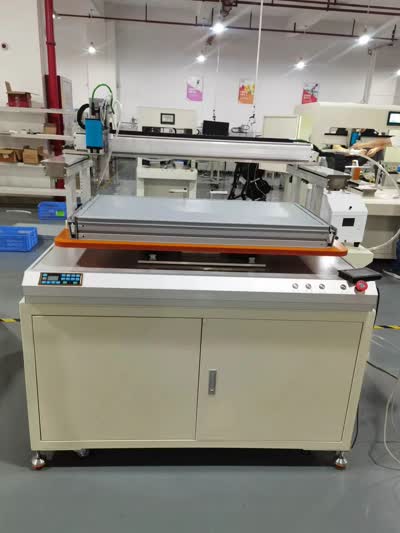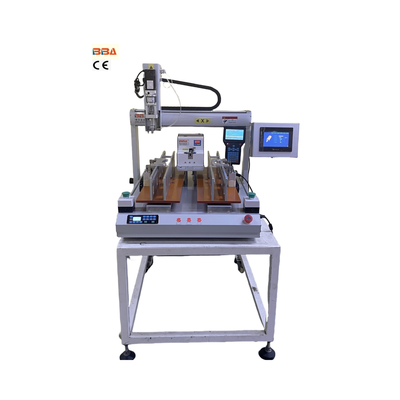Real-Time Error Detection in Screw Fastening Machines | Manufacturing Quality Control
| Product Name | Applicable industries |
| Screw Locking Robot | Smartphone Manufacturing |

Real-Time Error Detection in Screw Fastening Machines
In modern manufacturing environments, the reliability of assembly processes is paramount to ensuring product quality and operational efficiency. Among the various assembly tasks, screw fastening remains one of the most common yet critical operations. A single improperly tightened screw can lead to product malfunctions, safety hazards, and costly recalls. This is where the power of real-time error detection in screw fastening machines becomes a game-changer for production lines.
Traditional screw fastening operations often relied on post-assembly checks or periodic manual audits, which were not only time-consuming but also prone to human error. Defective products could easily slip through the cracks, only to be discovered at later stages—or worse, by the end customer. The advent of advanced industrial automation has revolutionized this process by integrating intelligent, real-time monitoring systems directly into the fastening equipment.
So, how does real-time error detection work in these machines? At its core, the system continuously monitors several key parameters during the fastening process. Torque and angle are the primary metrics analyzed. The machine is programmed with precise acceptable ranges for both the final torque and the angular rotation required to achieve it. Using high-resolution sensors and powerful embedded processors, the system compares the actual values recorded during each screwdriving cycle against these predefined setpoints.
If the measured torque is too low, it may indicate a stripped thread or a missing screw. Conversely, torque that is too high could suggest cross-threading or the use of an incorrect screw type. Similarly, an angle that deviates from the norm can signal that the screw was not properly seated or that the joint has compromised integrity. The system analyzes these data points in milliseconds, allowing it to make a pass/fail decision for each fastener before the product even moves to the next station.
The immediate benefit is the ability to halt the production line instantly upon detecting an error. This prevents the value-added assembly of a defective product, saving significant time and material costs. Operators are alerted immediately via a visual or auditory alarm, pinpointing the exact station and fault reason, which enables rapid corrective action. This minimizes downtime and prevents a cascade of errors down the line.
Beyond simple pass/fail triggering, sophisticated systems employ advanced data analytics to provide deeper insights. They can track performance trends over time, predicting tool wear or calibration drift before they lead to failures. This shift from reactive maintenance to predictive maintenance further enhances overall equipment effectiveness (OEE) and reduces unplanned stoppages.
Implementing such a system requires a robust and reliable hardware platform capable of withstanding the harsh conditions of a factory floor, coupled with intuitive software for easy setup and monitoring. The goal is to empower manufacturers to achieve zero-defect assembly, ensuring that every product that leaves the line meets the highest quality standards.
In conclusion, real-time error detection is no longer a luxury but a necessity in high-precision manufacturing. By transforming screw fastening from a simple mechanical task into an intelligent, data-driven process, manufacturers can guarantee unparalleled quality, boost productivity, and build a stronger reputation for reliability. The investment in such smart automation technology pays for itself many times over through reduced scrap, lower warranty costs, and a more efficient, streamlined production operation.


